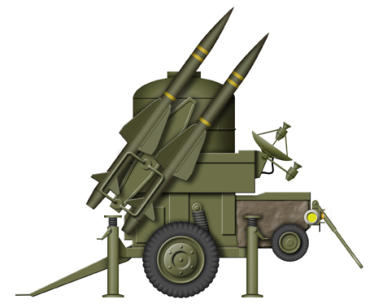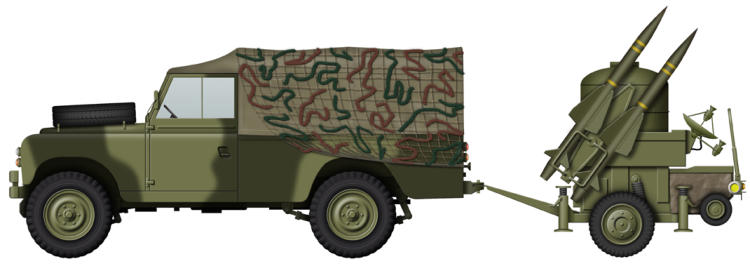
Scroll down to see all the illustrations on the page








Pages











Pages


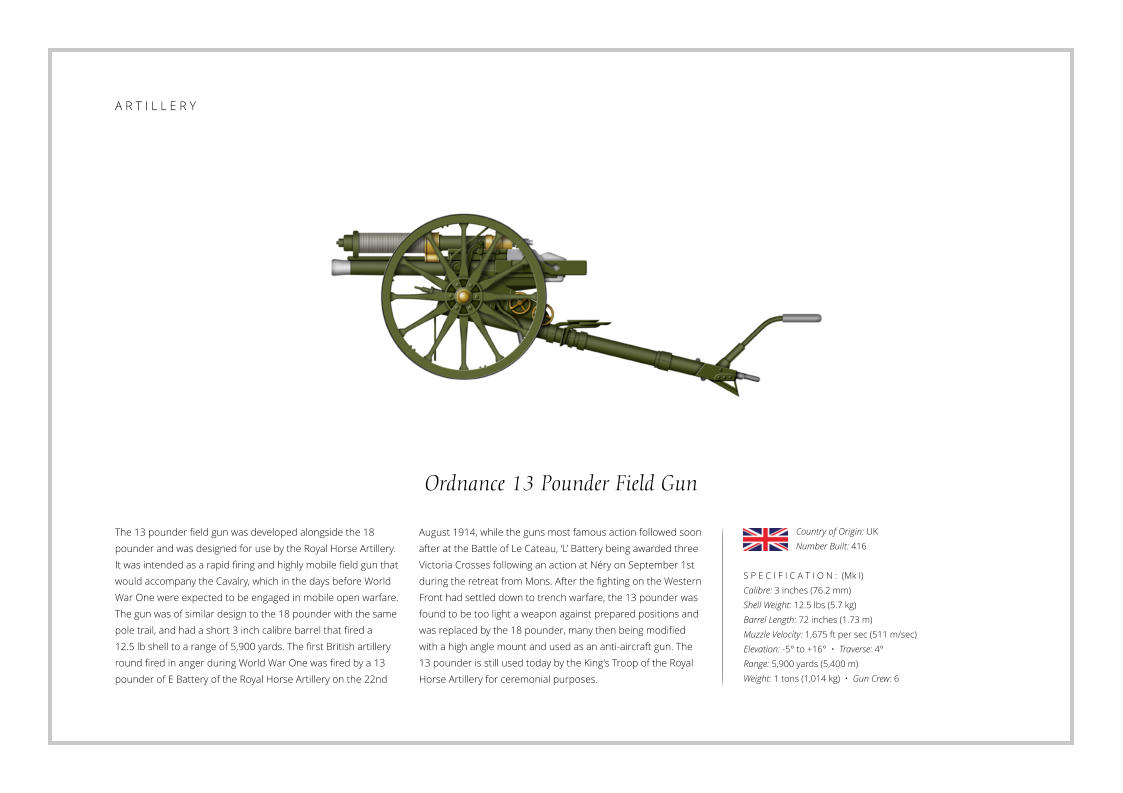
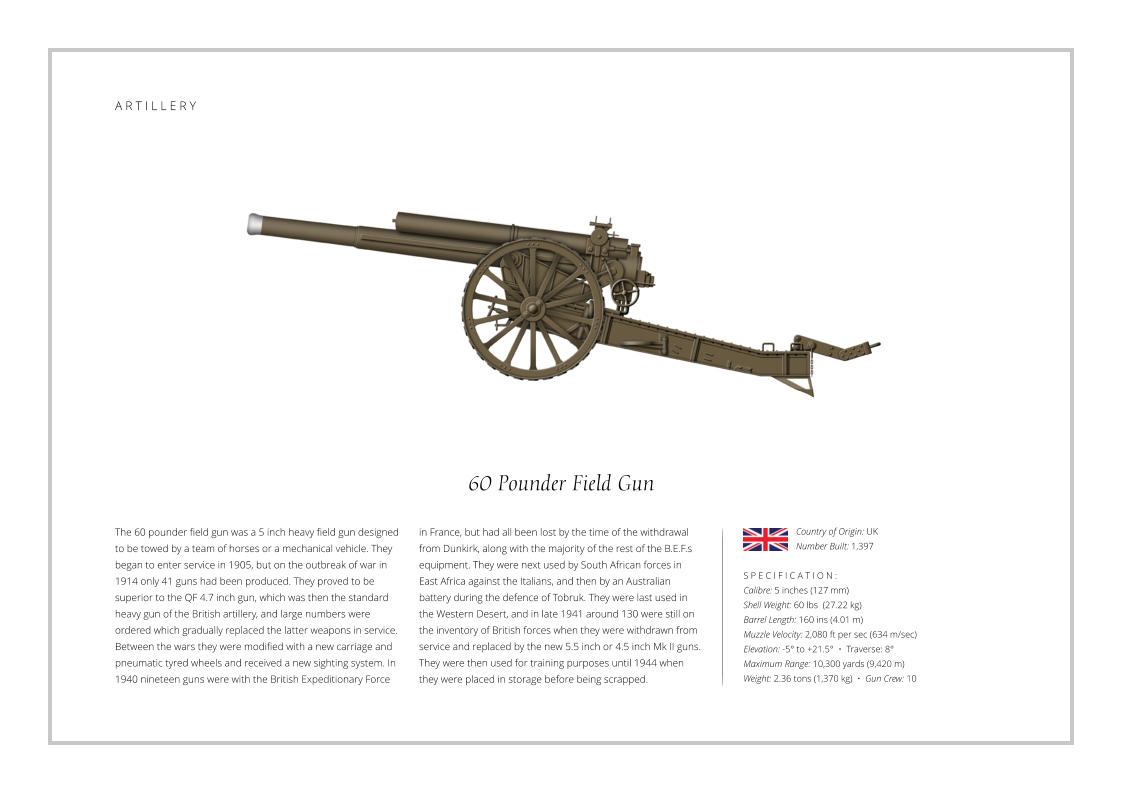
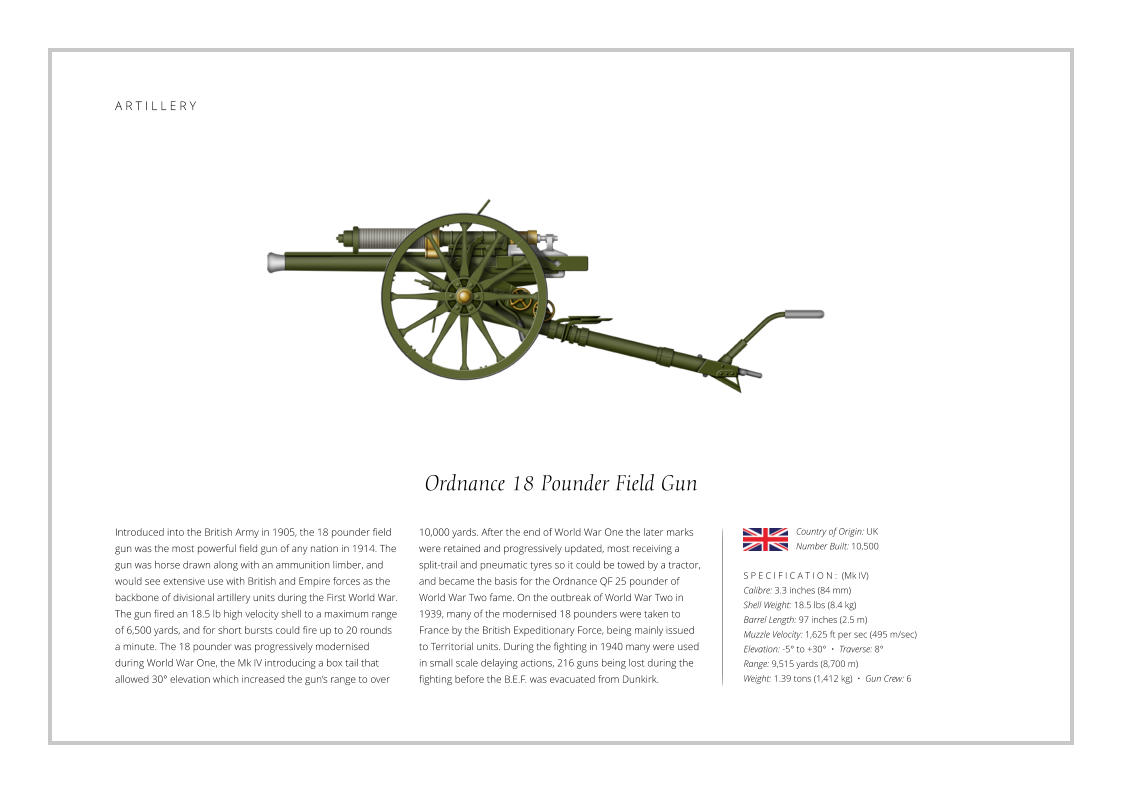
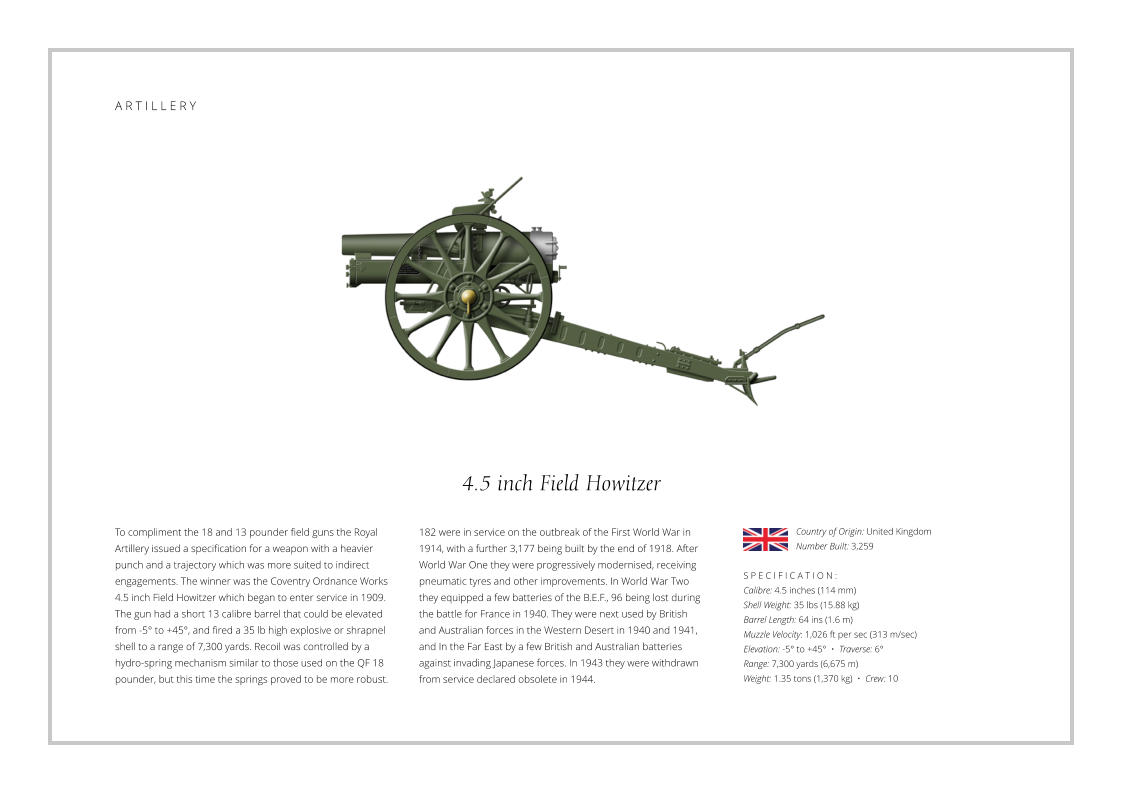
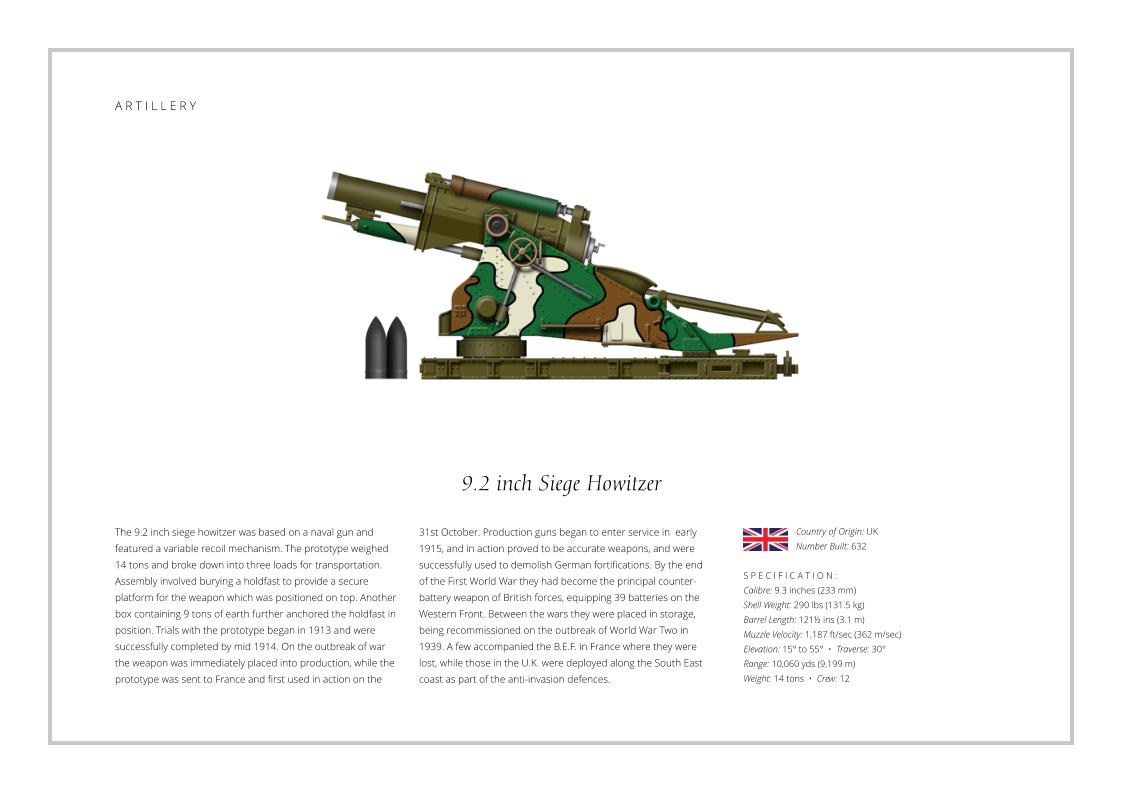
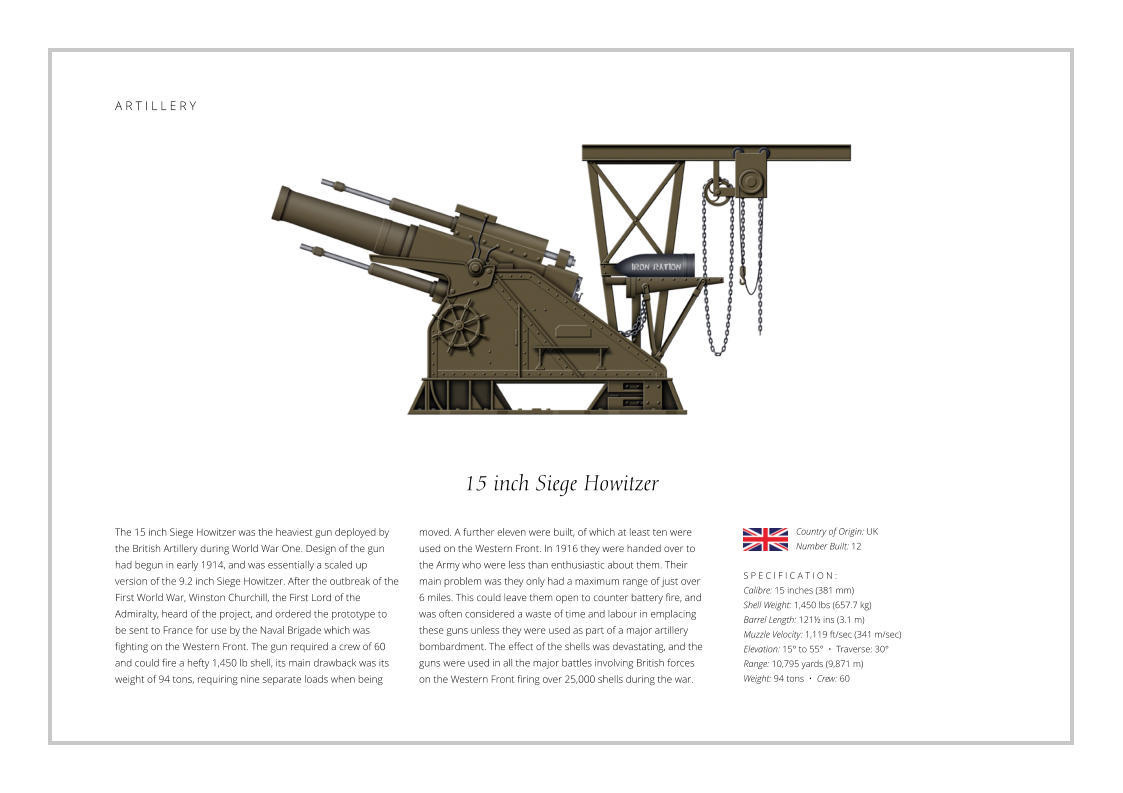
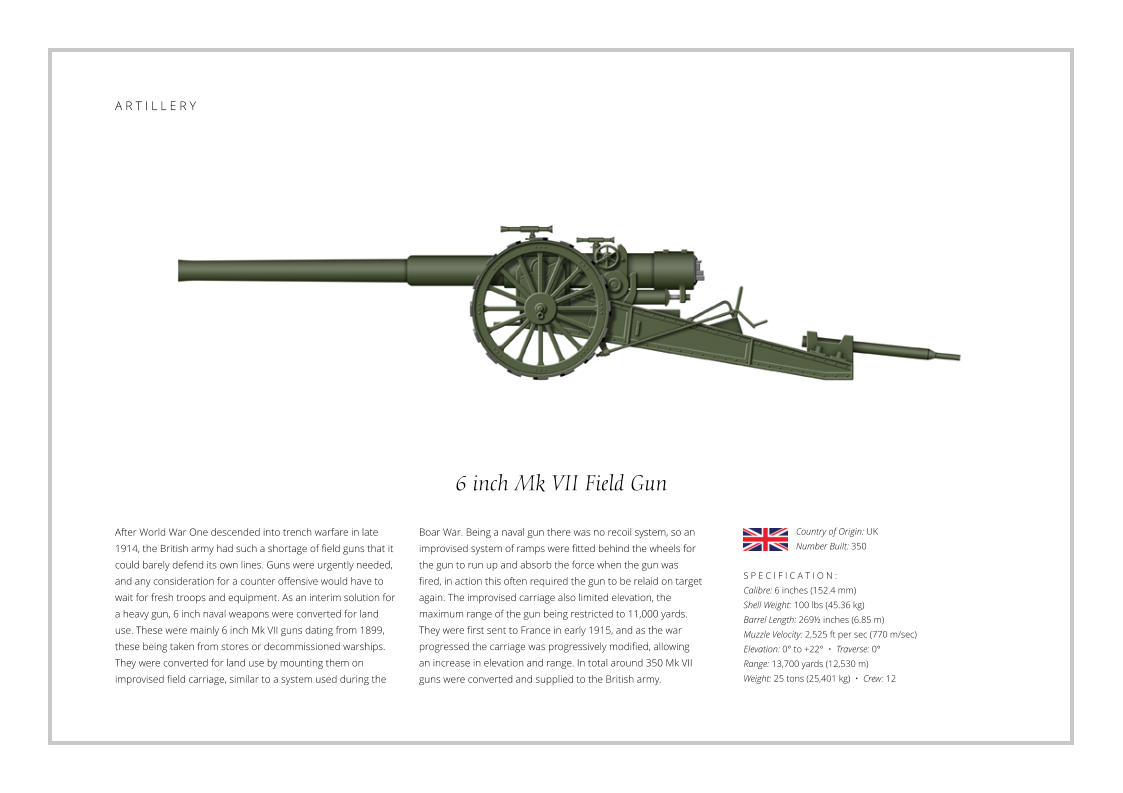
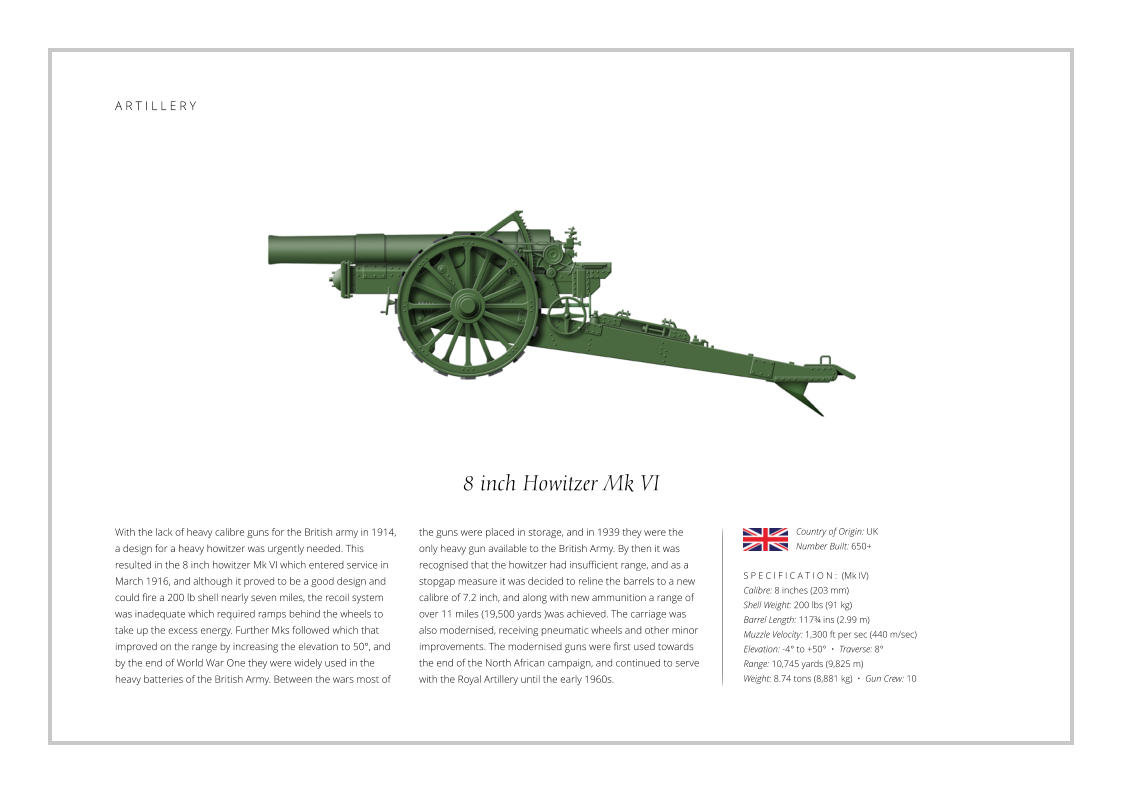
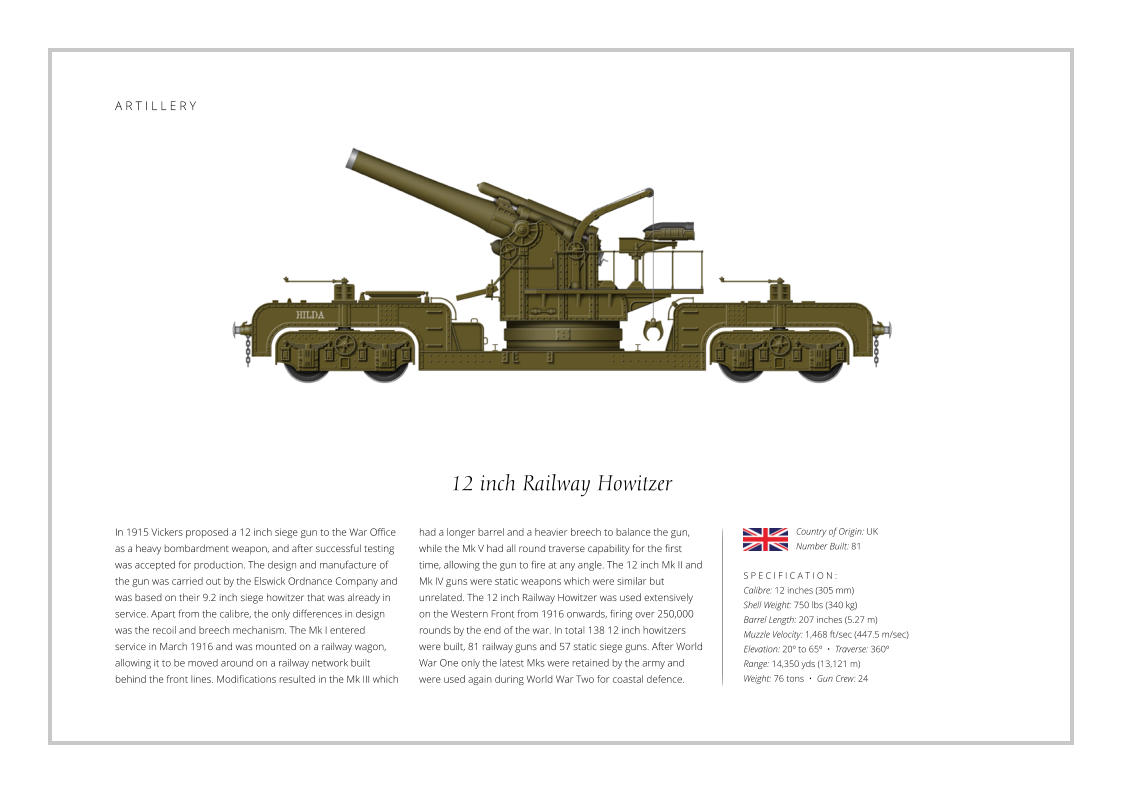
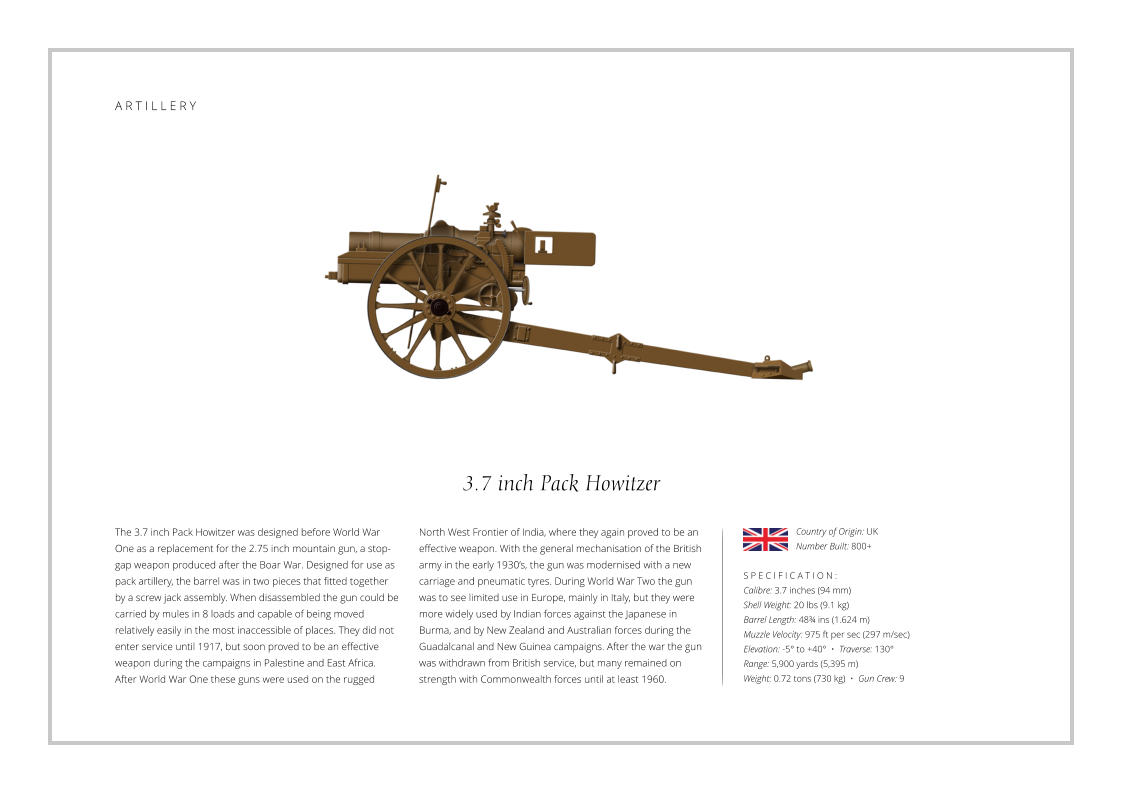
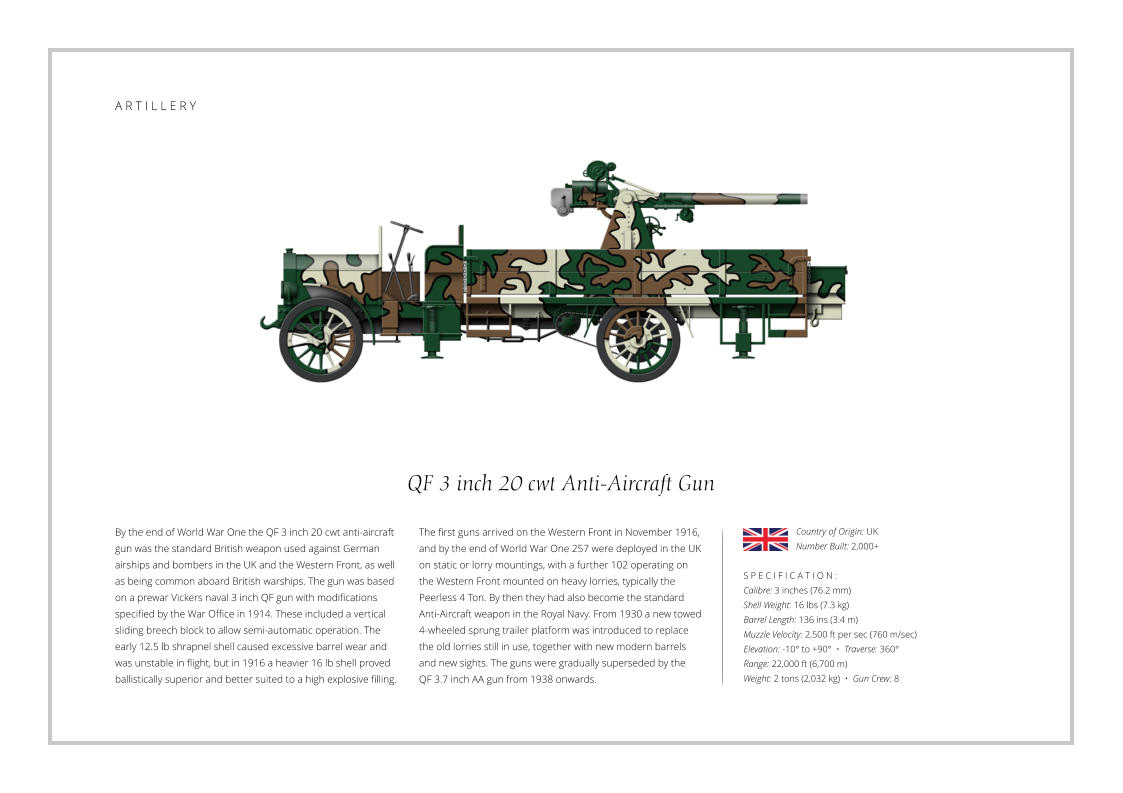
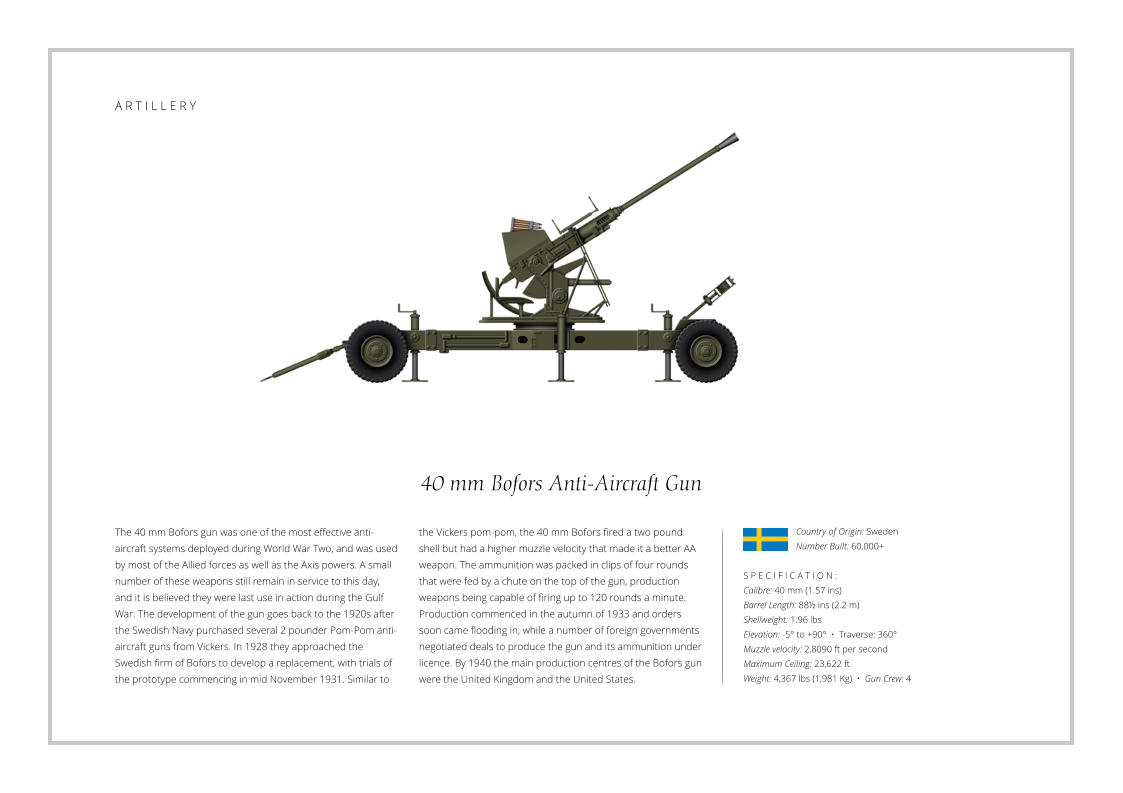
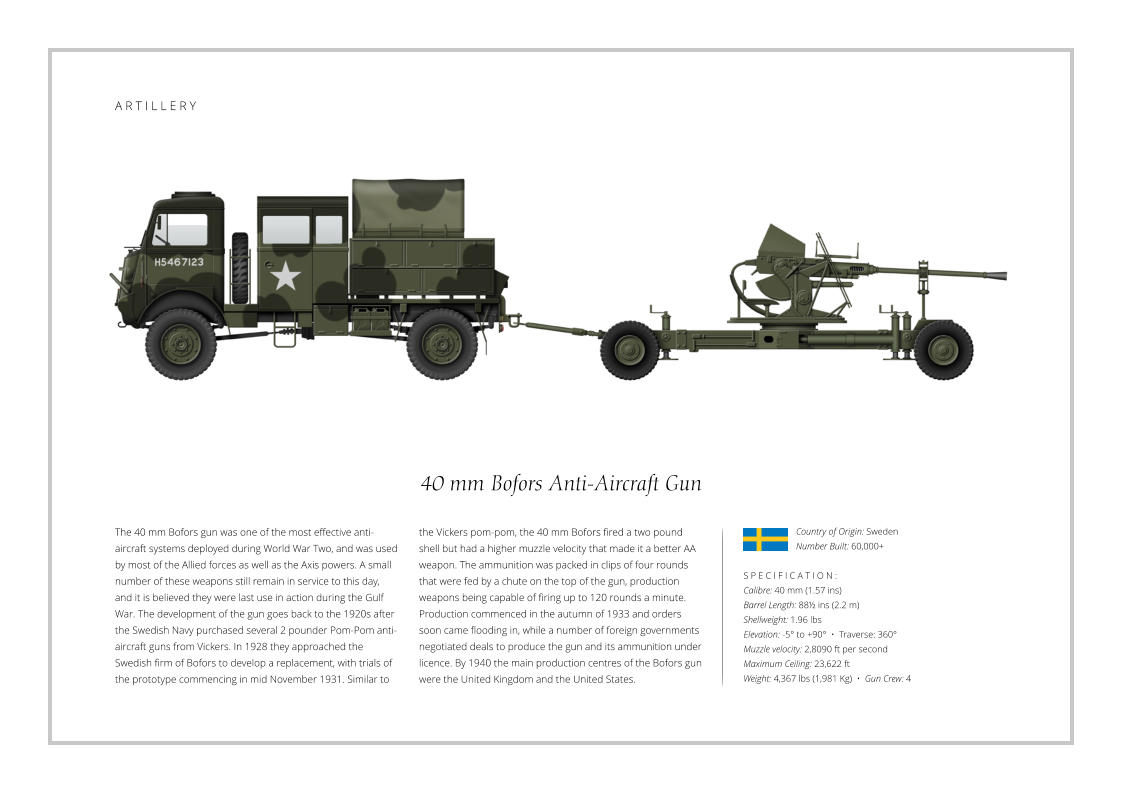
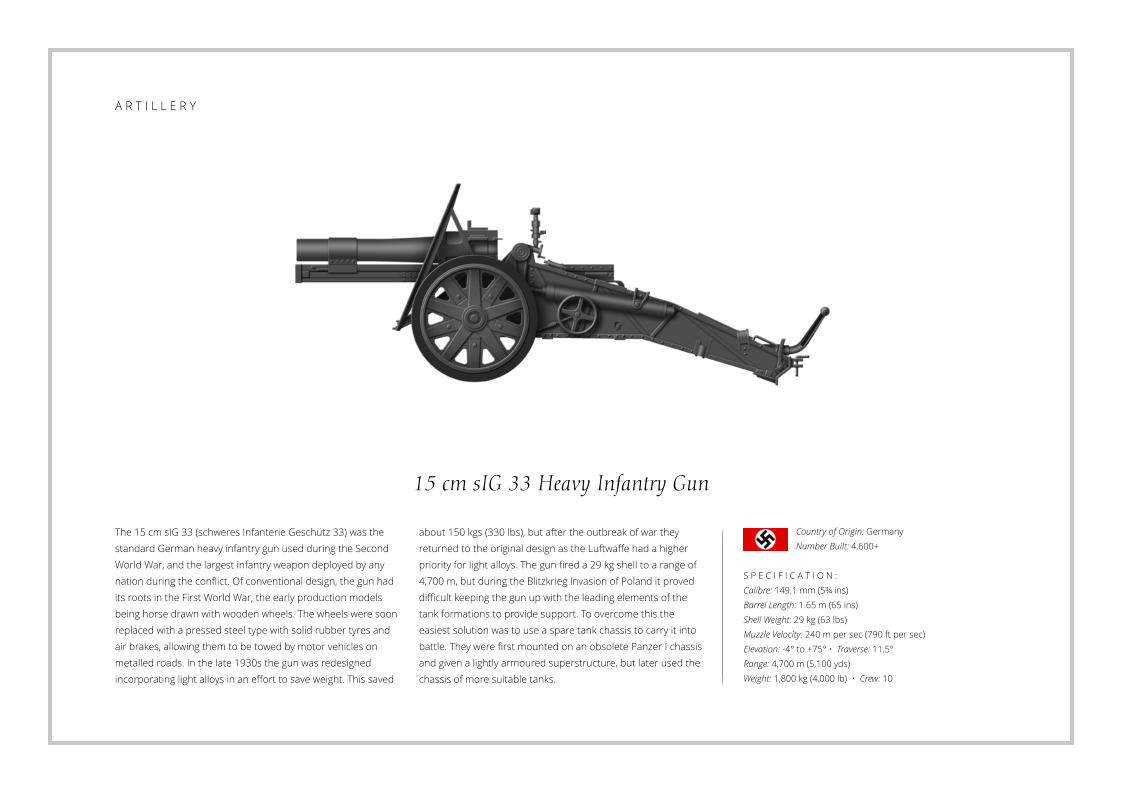
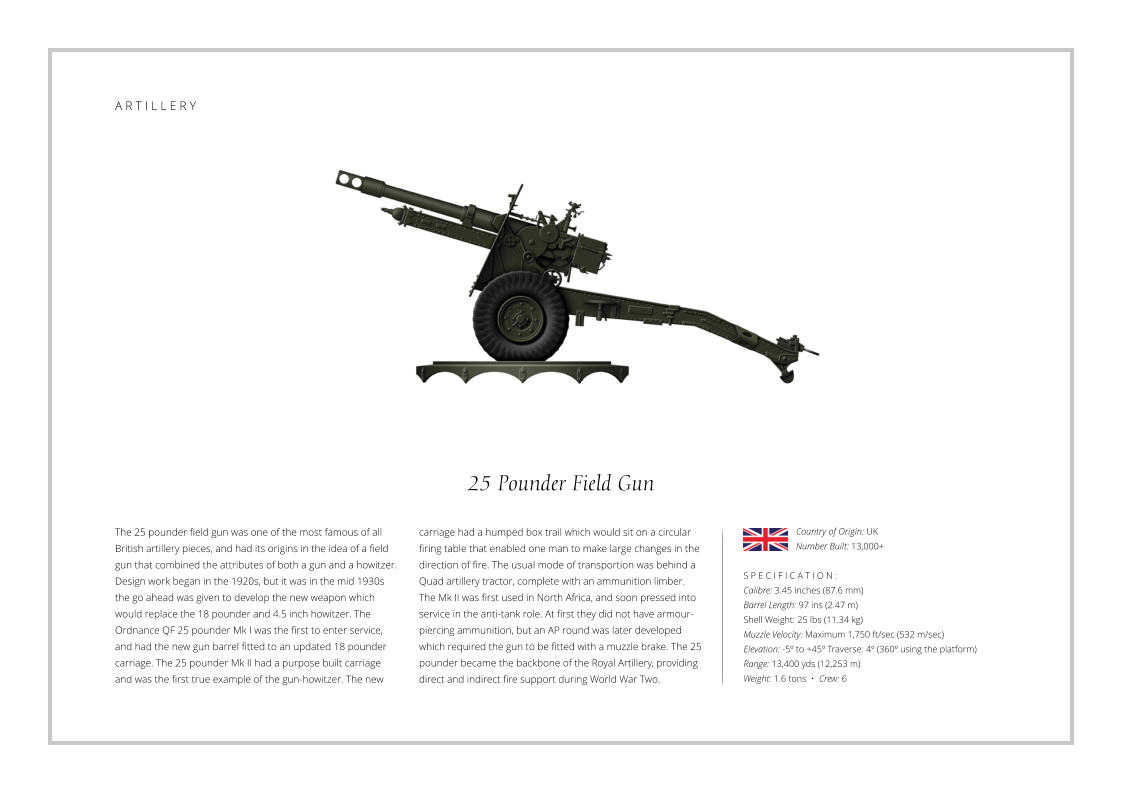
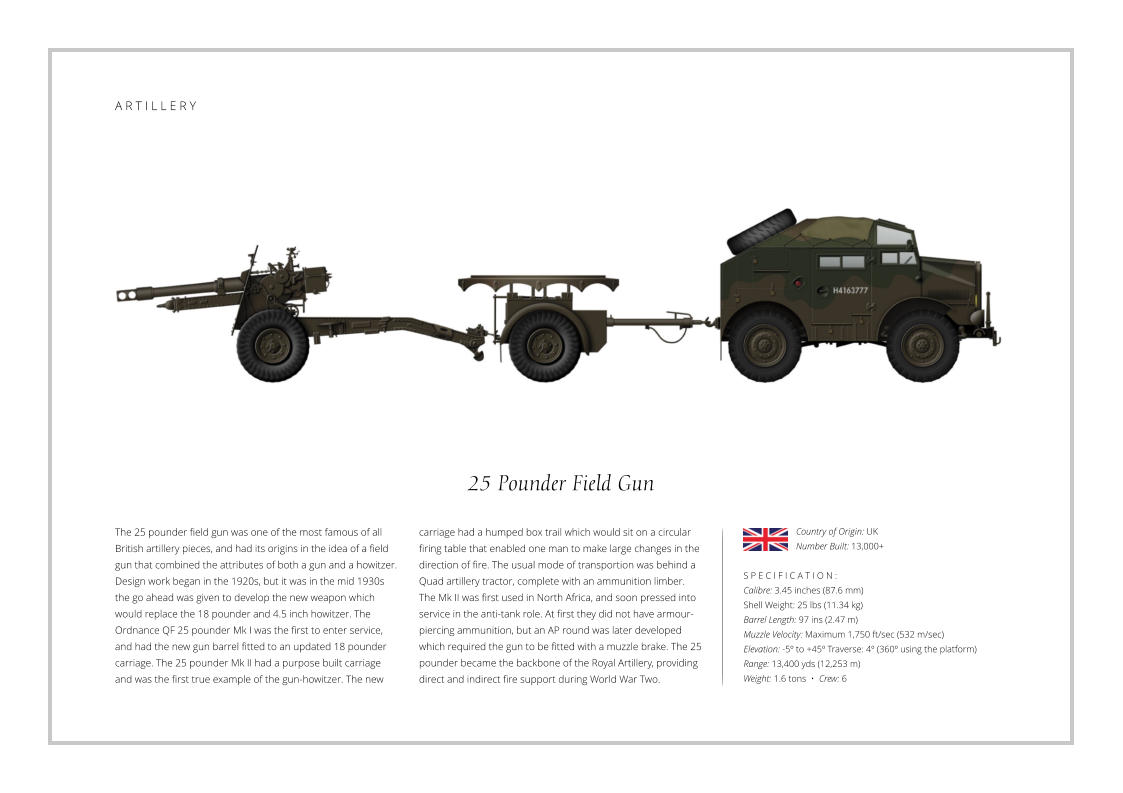
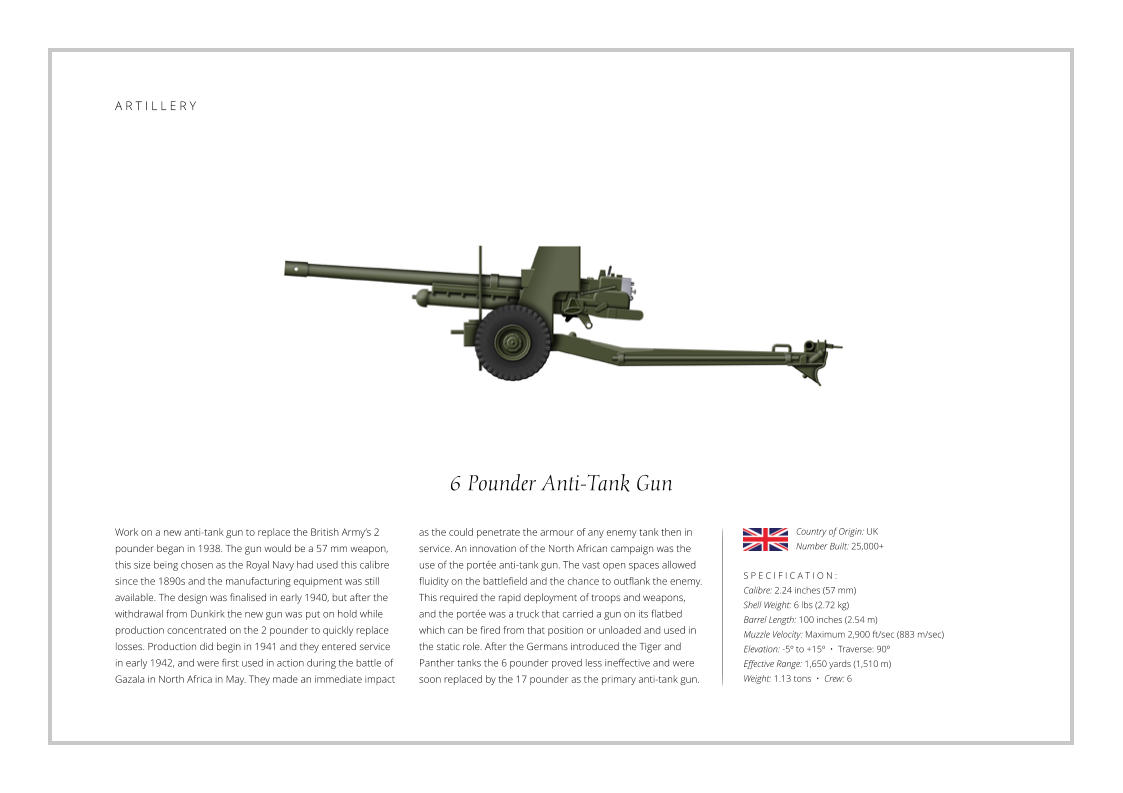
6 Pounder Anti-Tank Gun Portée
Work on a new anti-tank gun to replace the British Army’s 2
pounder began in 1938. The gun would be a 57 mm weapon,
this size being chosen as the Royal Navy had used this calibre
since the 1890s and the manufacturing equipment was still
available. The design was finalised in early 1940, but after the
withdrawal from Dunkirk the new gun was put on hold while
production concentrated on the 2 pounder to quickly replace
losses. Production did begin in 1941 and they entered service
in early 1942, and were first used in action during the battle of
Gazala in North Africa in May. They made an immediate impact
S P E C I F I C A T I O N :
Calibre: 2.24 inches (57 mm)
Shell Weight: 6 lbs (2.72 kg)
Barrel Length: 100 ins (2.54 m)
Muzzle Velocity: Maximum 2,900 ft/sec (883 m/sec)
Elevation: -5º to +15º • Traverse: 90º
Effective Range: 1,650 yds (1,510 m)
Weight: 1.13 tons • Crew: 6
as the could penetrate the armour of any enemy tank then in
service. An innovation of the North African campaign was the
use of the portée anti-tank gun. The vast open spaces allowed
fluidity on the battlefield and the chance to outflank the enemy.
This required the rapid deployment of troops and weapons,
and the portée was a truck that carried a gun on its flatbed
which can be fired from that position or unloaded and used in
the static role. After the Germans introduced the Tiger and
Panther tanks the 6 pounder proved less ineffective and were
soon replaced by the 17 pounder as the primary anti-tank gun.

Country of Origin: UK
Number Built: 25,000+
A R T I L L E R Y
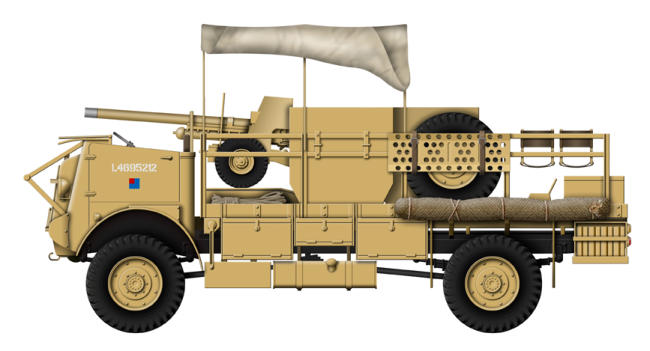
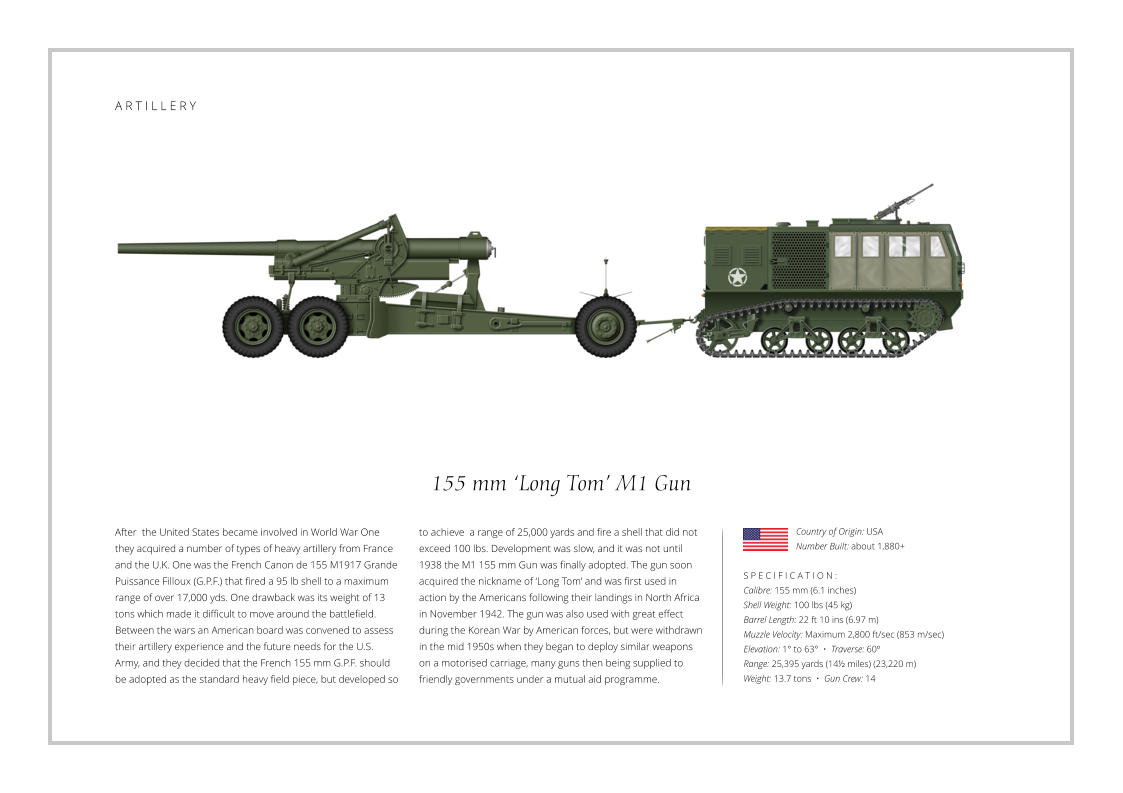
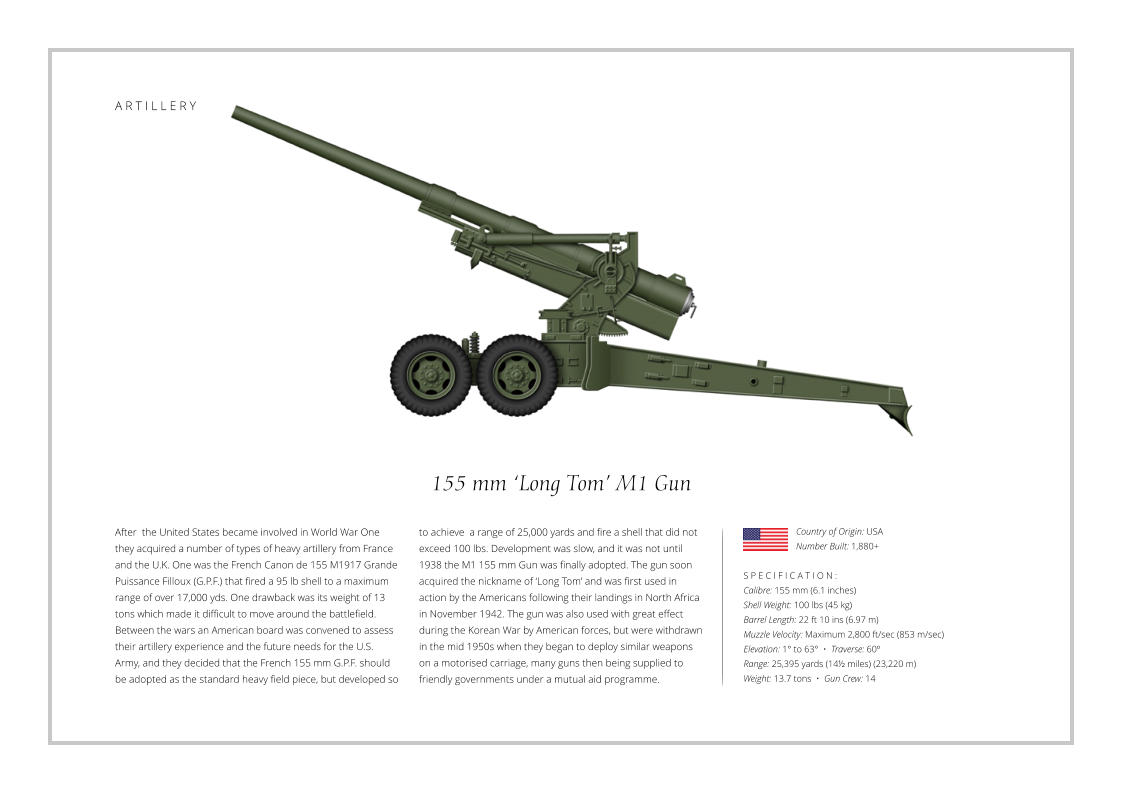
Towed Rapier Missile System
The Rapier surface-to-air missile was developed in the 1960s
for the British Army to replace their towed Bofors anti-aircraft
guns. The system uses a manual optical guidance system, with
guidance commands being sent to the missile while in flight
over a radio link. This results in a high level of accuracy,
diminishing the need for a large warhead. They entered service
in 1972 and eventually replaced the other anti-aircraft weapons
in Army service. The original Rapier system took the form of a
wheeled launcher with four missiles, an optical tracker unit, a
generator and trailer of stores. The launcher consisted of a
S P E C I F I C A T I O N :
Launcher Unit: Weight 24 cwt, Length 13 ft 1 in,
Width 5 ft 9 ins, Height 7 ft
Armament: 4 x Rapier Missile launchers
Missile Information: Weight 94 lbs, Warhead weight 3 lbs,
Warhead type HE semi-armour-piercing, flight speed 2,130 ft per
second, missile range, 23,000 ft, maximum altitude 10,000 ft
Crew: 8
vertical cylindrical unit carrying two missiles on each side, with
the surveillance radar dish and IFF system (Identification Friend
or Foe) under a radome on top. The guidance computer and
radar electronics were at the bottom, and a parabolic antenna
fitted to the front for sending guidance commands to the
missiles. They were first used in a major engagement with the
British Army during the Falklands conflict in 1982, and since
then has been developed and upgraded to suite modern
needs. The Rapier has enjoyed wide international sales, and
remains one of the UK's primary air-defence weapon systems.
Country of Origin: UK
Number Built: Unknown
A N T I - A I R C R A F T M I S S I L E S Y S T E M

Towed Rapier Missile System
The Rapier surface-to-air missile was developed in the 1960s
for the British Army to replace their towed Bofors anti-aircraft
guns. The system uses a manual optical guidance system, with
guidance commands being sent to the missile while in flight
over a radio link. This results in a high level of accuracy,
diminishing the need for a large warhead. They entered service
in 1972 and eventually replaced the other anti-aircraft weapons
in Army service. The original Rapier system took the form of a
wheeled launcher with four missiles, an optical tracker unit, a
generator and trailer of stores. The launcher consisted of a
S P E C I F I C A T I O N :
Launcher Unit: Weight 24 cwt, Length 13 ft 1 in,
Width 5 ft 9 ins, Height 7 ft
Armament: 4 x Rapier Missile launchers
Missile Information: Weight 94 lbs, Warhead weight 3 lbs,
Warhead type HE semi-armour-piercing, flight speed 2,130 ft per
second, missile range, 23,000 ft, maximum altitude 10,000 ft
Crew: 8
vertical cylindrical unit carrying two missiles on each side, with
the surveillance radar dish and IFF system (Identification Friend
or Foe) under a radome on top. The guidance computer and
radar electronics were at the bottom, and a parabolic antenna
fitted to the front for sending guidance commands to the
missiles. They were first used in a major engagement with the
British Army during the Falklands conflict in 1982, and since
then has been developed and upgraded to suite modern
needs. The Rapier has enjoyed wide international sales, and
remains one of the UK's primary air-defence weapon systems.
Country of Origin: UK
Number Built: Unknown
A N T I - A I R C R A F T M I S S I L E S Y S T E M

